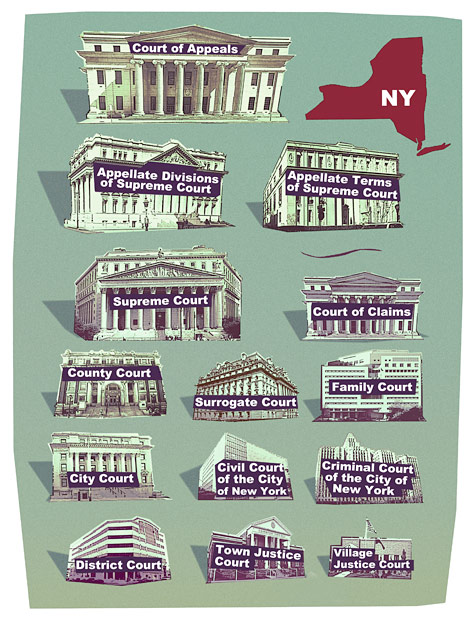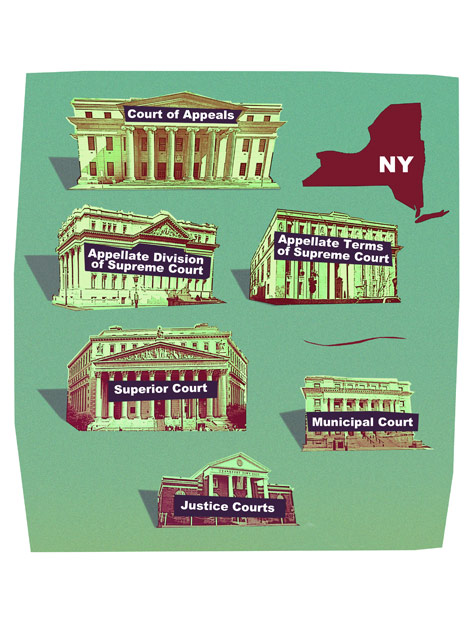New Yorkers must have a court system that is rational in its design, equitable in its distribution of resources, accessible to those with or without counsel, understandable by anyone who enters its doors and responsive to everyone, regardless of the specific issue, judge, courthouse or litigant seeking justice.
Among the largest court systems in the world, and yet the least streamlined in the US — New York has more trial courts than any other state in the country. Having so many trial courts may sound like a system that is required to address so many issues, but in fact, it is not. So many different trial courts create an exhausting, chaotic, confusing judiciary that despite the best efforts of many, simply cannot provide New Yorkers with the best possible courts nor system of justice.
Who is Impacted?
- Any unrepresented individual with few if any resources, who faces a system that they simply do not know how to navigate,
- Survivors of domestic violence who must make frequent court appearances in multiple courts for inter-related issues, having to retell the story of the violence they experienced, again and again,
- People in criminal, housing or family court where court calendars are overloaded,
- Families burdened by having to appear in multiple court venues, being represented by different lawyers on each case and trying to abide by multiple, often conflicting court orders,
- Those who lose wages and miss work,
- Businesses who waste time and money in an inefficient system,
- Individuals with disabilities who face additional and often insurmountable challenges related to travel and access; some have abandoned their legal cases,
- All litigants suffer as a result of the multiplicity of courts in New York, with the resulting confusion and expense and the lack of clarity as to where a dispute should be litigated, and
- Our state as the pre-eminent financial and commercial center of the world, must ensure that we have high-quality, efficient courts that protect the rule of law and equal access to justice for all.
We Must Amend the Constitution to Reform & Simplify the Courts
To create a system that is accessible and navigable we must amend the state constitution. Those who oppose court simplification are few, but the political power they yield has historically prevented reforms that would provide better opportunities for the people who go to court to have their issues resolved.
By simplifying the courts, we can equalize resources, prevent wasted time, stop loss wages, help families, expand efficiencies and ensure that all entering the system have a reasonable opportunity to have their matters heard in a timely and understandable manner.
There have been many efforts over the past 50 years to achieve similar court reforms in our state; none have succeeded.
The opportunity to do so can’t wait any longer. Join us to ensure greater justice for all New Yorkers.
Steps to Amend the Constitution
New York’s Constitution provides that amendments to the constitution may be proposed by the Legislature and, if adopted, referred to the next regular legislative session convening after the succeeding general election of members of that Legislature for consideration and passage. Such amendments must be approved by the people at an election before they can become a part of the Constitution.
So in order for this proposal to simplify the courts to become law, three steps must be successfully completed:
- Both houses of the Legislature must vote on and pass the legislation in 2022,
- Both houses of the Legislature must again vote on and pass the bill in the 2023-2024 legislative session, and then
- The bill must be passed by the voters in a statewide referendum.

